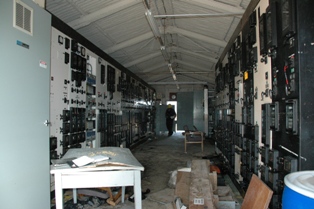Transformer substations in power supply systems
Areas of application of one- and two-transformer substations
As a rule, one- and two-transformer substation power supply systems are used... The use of three transformer substations causes additional capital costs and increases annual operating costs. Three transformer substations are rarely used as a forced solution during reconstruction, expansion of a substation, with a separate power supply system for electrical and lighting loads, when supplying sharply alternating loads.
Transformer substations with one transformer 6-10 / 0.4 kV are used when supplying loads that allow interruption of the power supply for a period of no more than 1 day, which is necessary for the repair or replacement of a damaged element (supply of energy consumers of category III), as well as for powering energy consumers of category II, subject to the reduction of the power supply by jumpers of the secondary voltage or in the presence of a stock reserve of transformers.
Transformer substations with one transformer are also useful in the sense that if the operation of the enterprise is accompanied by periods of low load, then it is possible due to the presence of jumpers between transformer substations to turn off part of the secondary voltage transformer, thereby creating an economically expedient mode of operation of transformers .
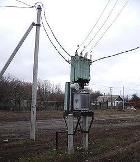 The economic mode of operation of transformers is understood as a mode that ensures minimum power losses in transformers. In this case, the problem of choosing the optimal number of working transformers is solved.
The economic mode of operation of transformers is understood as a mode that ensures minimum power losses in transformers. In this case, the problem of choosing the optimal number of working transformers is solved.
Such transformer substations can be economical in terms of the maximum convergence of the voltage of 6-10 kV to energy consumers, reducing the length of networks to 1 kV due to the decentralization of the transformation of electrical energy. In this case, the problem is solved in favor of using two single-transformer versus one two-transformer substation.
Transformer substations with two transformers are used with a predominance of electrical consumers of categories I and II. In this case, the power of the transformers is selected so that when one of them leaves work, the other transformer with a permissible overload will take the load of all consumers (in this situation, it is possible to temporarily turn off electrical consumers of category III). Such substations are also desirable, regardless of the category of users, in the presence of an uneven daily or annual load schedule.In these cases, it is advantageous to change the connected power of the transformers, for example, in the presence of seasonal loads, one or two shifts operate with a significantly different shift load.
Power supply a settlement, a district of a city, a workshop, a group of workshops or an entire enterprise can be provided by one or more transformer substations. The possibility of building one- or two-transformer substations is determined as a result of a technical and economic comparison of several options for the power supply system... The criterion for choosing an option is the minimum of reduced costs for the construction of the power supply system. The compared options should ensure the required level of power supply reliability.
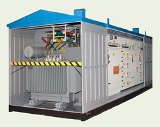 In the power supply systems of industrial enterprises, the following unit capacities of transformers are most often used: 630, 1000, 1600 kV × A, in the electric networks of cities — 400, 630 kV × A. Design and operation practice has shown the need to use the same type of transformers with the same power, since their diversity creates inconvenience in maintenance and causes additional repair costs.
In the power supply systems of industrial enterprises, the following unit capacities of transformers are most often used: 630, 1000, 1600 kV × A, in the electric networks of cities — 400, 630 kV × A. Design and operation practice has shown the need to use the same type of transformers with the same power, since their diversity creates inconvenience in maintenance and causes additional repair costs.
Power selection of transformers at transformer substations
In general, the choice of power transformers is made on the basis of the following basic input data: the estimated load of the power supply facility, the duration of the maximum load, the rate of increase of the loads, the cost of electricity, the carrying capacity of the transformers and their economic load.
The main criterion for choosing the unit power of transformerselectrical sub-station is, as in the selection of the number of transformers, a minimum of reduced costs obtained on the basis of a technical and economic comparison of the options.
Approximately, the selection of unit power of transformers can be done according to specific design load density (kV × A / m2) and full design load of the site (kV × A).
With a specific load density of up to 0.2 kV × A / m2 and a total load of up to 3000 kV × A, it is recommended to use 400 transformers; 630; 1000 kVA with secondary voltage 0.4 / 0.23 kV. At specific density and total load above the specified values, transformers with a capacity of 1600 and 2500 kVA are more economical.
However, these recommendations are not sufficiently substantiated due to the rapidly changing prices of electrical equipment and in particular TP.
In the design practice, the transformers of transformer substations are often selected according to the design load of the facility and the recommended coefficients of the economic load of the transformers Kze = СР / Сн.т., in accordance with the data in the table.
Recommended load factors of transformers for workshop TP
Transformer load factor Type of transformer substation and nature of the load 0.65 ... 0.7 Two transformer transformer substations with a predominant load of category I 0.7 ... 0.8 Single transformer transformer substations with a predominant load of category II in the presence of mutual redundancy in jumpers with other substations at secondary voltage 0.9 … 0.95 transformer substations with a load of category III or with a predominant load of category II with the possibility of using a stock reserve of transformers
When choosing the power of transformers, it is important to properly consider their load capacity.
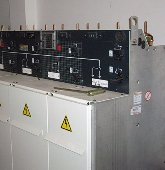 Under the load capacity of the transformer, the set of permissible loads, systematic and emergency overloads is understood from the calculation of the thermal wear of the insulation of the transformer. If you do not take into account the carrying capacity of the transformers, then you can unjustifiably overestimate their rated power when choosing, which is economically impractical.
Under the load capacity of the transformer, the set of permissible loads, systematic and emergency overloads is understood from the calculation of the thermal wear of the insulation of the transformer. If you do not take into account the carrying capacity of the transformers, then you can unjustifiably overestimate their rated power when choosing, which is economically impractical.
In the majority of substations, the load on the transformers varies and remains below the nominal for a long time. A significant part of the transformers are selected taking into account the post-emergency mode and therefore they usually remain under-loaded for a long time. In addition, power transformers are designed to work at a permissible ambient temperature of + 40 ° C. In fact, they work under normal conditions at ambient temperatures up to 20 ... 30 ° C. Therefore, a power transformer at a certain moment can be overloaded , taking into account the circumstances discussed above, without damaging the established service life (20 ... 25 years).
Based on studies of different modes of operation of transformers, GOST 14209-85 was developed, which regulates permissible systematic loads and emergency overloads of general-purpose power oil transformers with a capacity of up to 100 mV × A including types of cooling M, D, DC and C , taking into account the temperature of the medium.
To determine systematic loads and emergency overloads in accordance with GOST 14209-85, it is also necessary to know the initial load preceding the overload and the duration of the overload. These data are determined from the actual initial load curve (apparent power or current) converted to thermal equivalent in a rectangular two- or multi-stage curve.
Due to the need to have a real original load curve, a calculation of allowable loads and overloads in accordance with can be performed for existing substations to check the admissibility of the existing load schedule, as well as to determine the possible options for daily schedules with maximum values of the load factors at the previous moment of the overload mode and in the overload mode.
At substation design stages, typical load curves can be used or, in accordance with the recommendations also proposed in GOST 14209-85, select transformer power according to emergency overload conditions.
Then, for substations where emergency overloading of transformers is possible (two-transformer, one-transformer with backup connections on the secondary side), if the calculated load of the site Sp and the coefficient of permissible emergency overload Kz.av are known, the rated power of the transformer is determined as
University of Applied Sciences = Sp / Kz.av
It should also be noted that loading the transformer in excess of its rated power is only permitted when the transformer cooling system is in good working order and fully engaged.
As for typical graphs, they are currently designed for a limited number of load nodes.
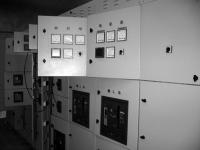 Since the choice of the number and power of transformers, especially of consumer substations 6-10 / 0.4-0.23 kV, is often determined mainly by an economic factor, it is essential to take into account the compensation of reactive power in electrical networks of the user.
Since the choice of the number and power of transformers, especially of consumer substations 6-10 / 0.4-0.23 kV, is often determined mainly by an economic factor, it is essential to take into account the compensation of reactive power in electrical networks of the user.
By compensating the reactive power in networks up to 1 kV, it is possible to reduce the number of 10 / 0.4 transformer substations, their rated power. This is especially important for industrial users, in networks up to 1 kV, which have to compensate significant values of reactive loads. The existing methodology for the design of reactive power compensation in electrical networks of industrial enterprises and implies the selection of the capacity of compensating devices with the simultaneous selection of the number of transformers of the substation and their capacity.
Thus, taking into account the above, the complexity of direct economic calculations, in view of the rapidly changing indicators of substation construction costs and electricity costs, in the design of new and reconstruction of existing consumer substations 6-10 / 0, 4 -0.23 kV, power transformer power selection can be done as follows:
— in industrial networks:
a) select the unit power of the transformers in accordance with the recommendations for the specific density of the design load and the full design load of the facility;
b) the number of substation transformers and their rated power must be selected in accordance with design guidelines reactive power compensation in electrical networks of industrial enterprises;
c) the selection of the power of the transformers must be carried out taking into account the recommended load factors and the permissible emergency overloads of the transformers;
d) in the presence of typical load schedules, the selection must be made in accordance with GOST 14209-85, taking into account the compensation of reactive power in networks up to 1 kV;
— in urban electricity networks:
a) with available typical load curves of the substation, the choice of transformer power should be made in accordance with GOST 14209-85;
b) knowing the type of load of the substation, in the absence of its typical schedules, it is advisable to make the choice in accordance with the methodological instructions.
An example. The selection of the number and capacity of transformers of workshop transformer substations according to the following initial data: Пр = 250 kW, Qp = 270 kvar; category of electrical receivers of the workshop according to the degree of reliability of the power supply — 3.
Answer. Full design capacity of the workshop.

From design power (377 kV × A) the required level of power supply reliability (category 3 of electricity consumers) can be taken as a single-transport substation with a transformer power Snt = 400 kV × A.
The load factor of the transformer will be
 which meets the relevant requirements.
which meets the relevant requirements.

